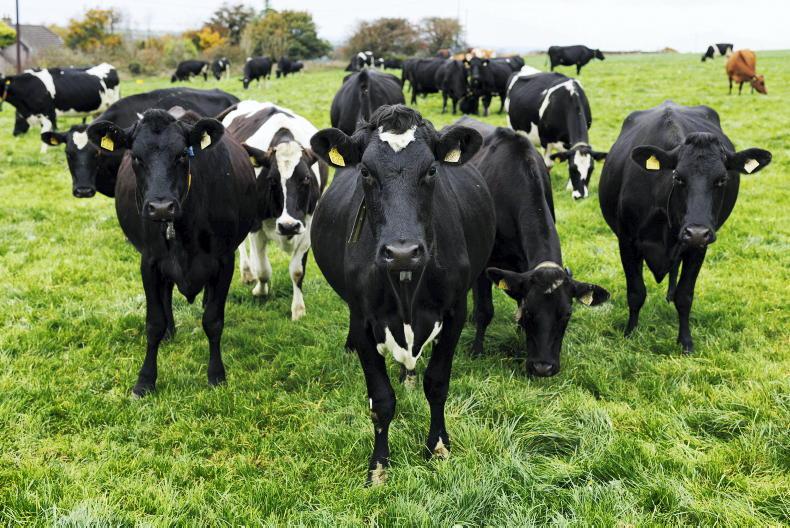While the US has greatly reduced import tariffs on all trading partners, all countries are now paying at least an additional 10% on imports. This includes countries like Australia that have a tariff free trade agreement for beef and sheep meat access.
While 10% may be manageable commercially, it is still significant and has the potential to be a disruptor, especially as US beef exports to China have been effectively ended. This has happened because of the penal retaliatory tariff and the fact that China hasn’t renewed the licenses of over 300 US beef exporting companies. It means that a market for 200,000 tonnes of high value US beef cuts no longer exists. While these won’t be fully absorbed into the US market instead of imports, a portion will be such as chuck meat which will be interchangeable with 90CL meat which is the main beef import product.
Australia is the main supplier of this product and up to 12th April had provided 119,973 tonnes of all US beef imports according to USDA. This was almost 27,000 tonnes or 29% more than in the same period last year which in turn was an increase on 2023 because of increased Australian supply meeting increased US import demand. Overall US beef imports so far in 2025 are running 8% ahead of this time last year at 471,996 tonnes.
US tariff free quotas
Both Canada and Mexico have had a tariff free trading arrangement with the US since the mid 1990’s which was negotiated during the first Trump Presidency. However, this was changed by the imposition of a 25% tariff on all goods imported from these countries which came into effect at the start of March though since removed for all goods covered by the trade agreement.
Australia has the largest tariff free quota for beef at almost 450,000 tonnes followed by New Zealand who have a quota for 213,000 tonnes. The other quotas available are 20,000 tonnes each to Argentina and Uruguay with a 65,000 tonne quota available to share on a first come first served basis by all other trading partners. This is the quota that Irish exporters have access to though in practice over the past couple of years it has been used up by Brazil in the first couple of weeks in the year. Out of quota US beef imports pay a 26.4% tariff.
Currency impact
It isn’t just a changing quota picture that exporters have to deal with, the rapid weakening in the value of the Dollar has the same effect as tariffs in that it makes US imports more expensive. For example, the US dollar is just under 10% weaker than it was at the start of the year, in practice this means that US imports are almost 10% more expensive as a result of weaker currency.
The US dollar is the currency in which most international beef sales are priced and there is a knock on effect beyond US borders. For example, the value of the Mercosur steer as reported weekly in the WBR has increased above $4/kg for the first time since the middle of 2022 with the strengthening Brazilian, Argentinian and Uruguayan currencies against the US dollar a major part of the explanation.
Comment
Global beef markets are the same as all other commodities, their greatest dislike is uncertainty. Over recent months the narrative had been that globally, consumer demand was keeping ahead of production. Traders were focused on moving product from areas of plenty to where there was a deficit in supply and therefore opportunity to trade. The US and Europe were the lucrative markets for increasing Australian and Brazilian beef production. The introduction of US import tariffs combined with retaliation by China, the worlds biggest beef importer, has disrupted a balanced market. So far there has been no dramatic impact on prices but the addition of currency to the mix and a weaker US dollar in particular, adds further uncertainty to the mix.
Read more
Dempsey at Large: tariff compensation for US farmers
Long way from US vice president’s positive comments to a trade deal for the UK
While the US has greatly reduced import tariffs on all trading partners, all countries are now paying at least an additional 10% on imports. This includes countries like Australia that have a tariff free trade agreement for beef and sheep meat access.
While 10% may be manageable commercially, it is still significant and has the potential to be a disruptor, especially as US beef exports to China have been effectively ended. This has happened because of the penal retaliatory tariff and the fact that China hasn’t renewed the licenses of over 300 US beef exporting companies. It means that a market for 200,000 tonnes of high value US beef cuts no longer exists. While these won’t be fully absorbed into the US market instead of imports, a portion will be such as chuck meat which will be interchangeable with 90CL meat which is the main beef import product.
Australia is the main supplier of this product and up to 12th April had provided 119,973 tonnes of all US beef imports according to USDA. This was almost 27,000 tonnes or 29% more than in the same period last year which in turn was an increase on 2023 because of increased Australian supply meeting increased US import demand. Overall US beef imports so far in 2025 are running 8% ahead of this time last year at 471,996 tonnes.
US tariff free quotas
Both Canada and Mexico have had a tariff free trading arrangement with the US since the mid 1990’s which was negotiated during the first Trump Presidency. However, this was changed by the imposition of a 25% tariff on all goods imported from these countries which came into effect at the start of March though since removed for all goods covered by the trade agreement.
Australia has the largest tariff free quota for beef at almost 450,000 tonnes followed by New Zealand who have a quota for 213,000 tonnes. The other quotas available are 20,000 tonnes each to Argentina and Uruguay with a 65,000 tonne quota available to share on a first come first served basis by all other trading partners. This is the quota that Irish exporters have access to though in practice over the past couple of years it has been used up by Brazil in the first couple of weeks in the year. Out of quota US beef imports pay a 26.4% tariff.
Currency impact
It isn’t just a changing quota picture that exporters have to deal with, the rapid weakening in the value of the Dollar has the same effect as tariffs in that it makes US imports more expensive. For example, the US dollar is just under 10% weaker than it was at the start of the year, in practice this means that US imports are almost 10% more expensive as a result of weaker currency.
The US dollar is the currency in which most international beef sales are priced and there is a knock on effect beyond US borders. For example, the value of the Mercosur steer as reported weekly in the WBR has increased above $4/kg for the first time since the middle of 2022 with the strengthening Brazilian, Argentinian and Uruguayan currencies against the US dollar a major part of the explanation.
Comment
Global beef markets are the same as all other commodities, their greatest dislike is uncertainty. Over recent months the narrative had been that globally, consumer demand was keeping ahead of production. Traders were focused on moving product from areas of plenty to where there was a deficit in supply and therefore opportunity to trade. The US and Europe were the lucrative markets for increasing Australian and Brazilian beef production. The introduction of US import tariffs combined with retaliation by China, the worlds biggest beef importer, has disrupted a balanced market. So far there has been no dramatic impact on prices but the addition of currency to the mix and a weaker US dollar in particular, adds further uncertainty to the mix.
Read more
Dempsey at Large: tariff compensation for US farmers
Long way from US vice president’s positive comments to a trade deal for the UK










SHARING OPTIONS